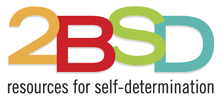
by Patricia “Patty” Violi, Ed.D. , Associate Director, Disability Resource Center |
In honor of the first anniversary of defending my dissertation, it felt like the right time to reflect on the research process and how it has shaped me professionally. Conducting research has a funny way of opening up your world and mind to new ideas, experiences, and resources that you didn’t think possible when developing your topic initially. Through great fortune and amazing mentors, I was able to meet Dr. Sharon Field who was instrumental in the development of my dissertation research. I began my research planning and development determined to work with college students on the Autism Spectrum, but I did not have a clear idea of how I would develop an intervention to support my research. Most of the existing research and programming focuses on K-12 students and students with more significant disabilities. There is very limited research and publications that explore the transition needs of degree-seeking students with disabilities. I am lucky to have fabulous mentors who connected me to a network of researchers and professionals who brought me to Dr. Sharon Field.
Dr. Field introduced me to the Model for Self-Determination (Field & Hoffman, 1994, 2015) which would shape my research project into the published piece it is today. The Model for Self-Determination provided me with an evidence-based framework to develop the curriculum used in my study and guide the analysis of the data collected. Drs. Field and Hoffman developed an entire curriculum and assessment supported by the Model for Self-Determination. I was excited about the opportunities that this evidence-based curriculum would afford me in my own research. Similar to many other transition-support curricula in circulation, the Steps to Self-Determination was developed to meet the needs of a high school audience and their parents (Field & Hoffman, 2005). But with the blessing of Dr. Field and ProEd Inc., I was able to use the major topics and develop them into a college-based curriculum to support college students with disabilities in understanding their needs as they transition to adulthood and the college environment. The result of this collaboration and redevelopment bore the Self-Determination for College Success (SDCS; Violi, 2021) that was used during my dissertation research.
A major factor in the development of my study and the progression of my participants was the use of the Self-Determination Assessment Internet (SDAi; Hoffman et al., 2015) which allowed me to measure the participants’ initial self-determination levels and guide the study to support the needs of the participants. The SDAi provided us with important information that gave the participants an opportunity to take a deeper look at themselves and work through the different lessons that I had developed in the SDCS. The SDAi gave the participants an opportunity to take a deep, honest look at themselves and led to powerful discussions that I don’t believe would have developed organically if they did not have that information available to them. The SDAi was administered at the beginning and end of the SDCS intervention. The most common reaction to the change in their scores was, “Did I really do that on my own?” I would reassure them that, yes, they did create change in their lives in a short period of time. While I was present as a coach and supporter, the participants really developed their own community and worked through the barriers they encountered together. They guided the full development of the SDCS and how I would implement it in the future.
Throughout the study, the participants explored their feelings toward their disabilities and how it shaped their interactions in school and in life. Giving the participants the opportunity to work through these feelings and validate their experiences allowed for very open, honest conversations about their hopes and dreams for the future. Through the SDCS, I guided the discussions from hopes and dreams to measurable goals that were achievable in the short term. The use of the SDAi and SDCS in my study gave the participants the tools to work through the emotions and barriers they brought with them to college and develop more positive outlooks on their lives and their goals to complete their degree programs and go out into the world. Nationally, research is still leaning towards the development of transition support for high school students, but I hope that my research and discussions with other practitioners will show the need for continued support, such as the SDCS and SDAi, through college. Transition does not stop at high school graduation, it’s only the beginning and we must work to meet the needs of those students who are struggling to navigate the new world of work, education, and adulthood that has been thrust upon them.
References
Field, S., & Hoffman, A. (2005). Steps to self-determination: A curriculum to help adolescents learn to achieve their goals (2nd edition). Pro Ed.
Field, S., & Hoffman, A. (2015). An Action Model for Self-Determination. Revised from “Development of Model for Self-Determination,” by S. Field and A. Hoffman, 1994, Career Development for Exceptional Individuals, 17(2), p. 165.
Hoffman, A., Field, S., & Sawilowsky, S. (2015). Self-determination assessment internet. Ealy Education Group.
Violi, P. K., (2021). Becoming self-determined: Improving self-determination skills in college students with disabilities (Publication No. 28775408) [Doctoral dissertation, Arizona State University]. ProQuest Dissertations Publishing.

No comment yet, add your voice below!